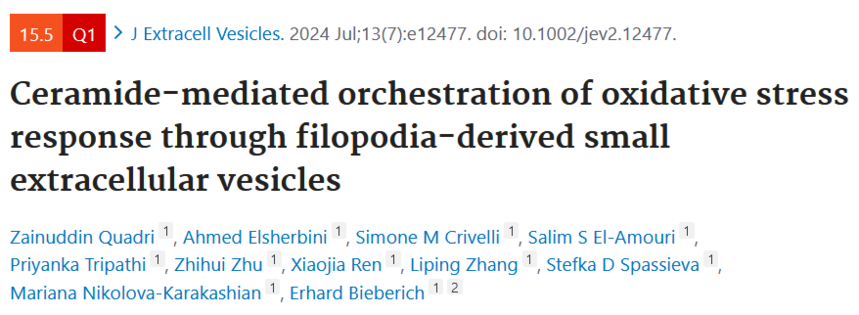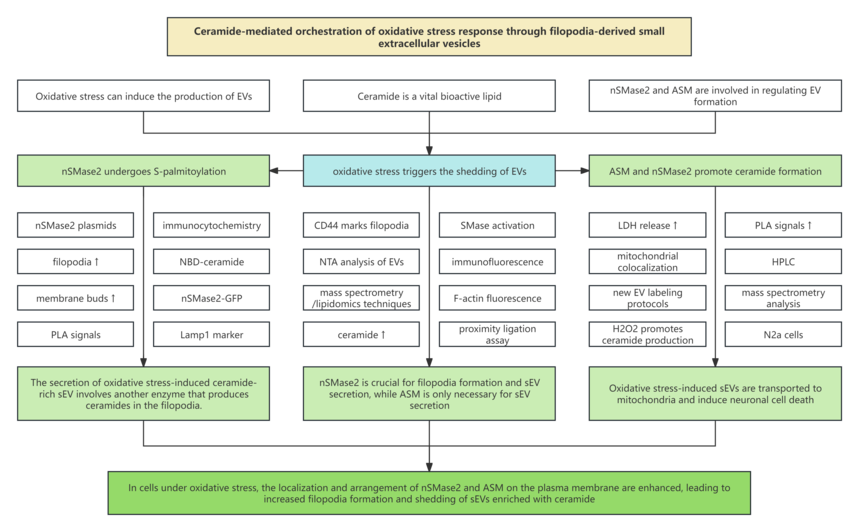Please click the button below to go to our email login page
|
New ideas on “oxidative stress”! Successfully published on SCI with 15.5 of IF! Unveiling the Regulatory Mechanism of Oxidative Stress on sEVs Secretion.Reactive oxygen species (ROS) are highly reactive substances that can destroy cellular components such as lipids, proteins, and DNA, ultimately resulting in cellular dysfunction and death. Under oxidative stress, there is an imbalance between the production of ROS and the body's ability to counteract it through antioxidant defense mechanisms. So what are the design ideas for topics related to oxidative stress? Let's explore this together today.
We will now share a literature published in the Journal of Extracellular Vesicles with an IF of 15.5, hoping to provide you with unique inspiration.
1. Research background 1.1 Extracellular vesicles (EVs) are membrane-enclosed structures of small vesicles released by cells and are involved in various biological processes. 1.2 Oxidative stress is a key factor in cell damage and disease development, and it can induce cells to produce EVs. 1.3 In the field of cell biology, ceramide, a vital bioactive lipid, plays a crucial role in cell signaling, cell death, and changes in cell shape. 1.4 Neutral sphingomyelinase 2 (nSMase2) and acid sphingomyelinase (ASM) catalyze the hydrolysis of sphingomyelin on cell membranes to produce ceramide, impacting membrane fluidity and curvature, and thus participating in the regulation of EV formation. 1.5 Under oxidative stress conditions, the activity of nSMase2 and ASM are increased, promoting ceramide production, which may be closely related to the biogenesis and secretion of EVs.
2. Technical routes
3. Research results 3.1 Oxidative stress induces the formation of filopodia and the secretion of filopodia derived EVs 3.2 The generation of ceramides by SMases is crucial for oxidative stress-induced sEV secretion 3.3 When nSMase2 is localized on the plasma membrane of filopodia, S-palmitoylation occurs 4. ASM and nSMase2 interact in filopodia, inducing the secretion of ceramide-rich sEVs 5. Oxidative stress-induced sEV transports ceramides to mitochondria and induces cell death
4. Research conclusion This study revealed that oxidative stress regulates the formation and secretion of sEVs by modulating the interaction between nSMase2 and ASM in filopodia and the generation of ceramides. In non-stress cells, baseline shedding of sEV is decreased due to lower levels of plasma membrane ceramides. In oxidative stress cells, the localization and arrangement of nSMase2 and ASM on the plasma membrane are increased, causing an increase in the formation and shedding of filopodia of sEVs rich in ceramides. nSMase2 inhibitor GW4869 can reduce the formation of filopodia and the shedding of sEVs, while inhibition of ASM can only reduce the shedding of sEVs. |


